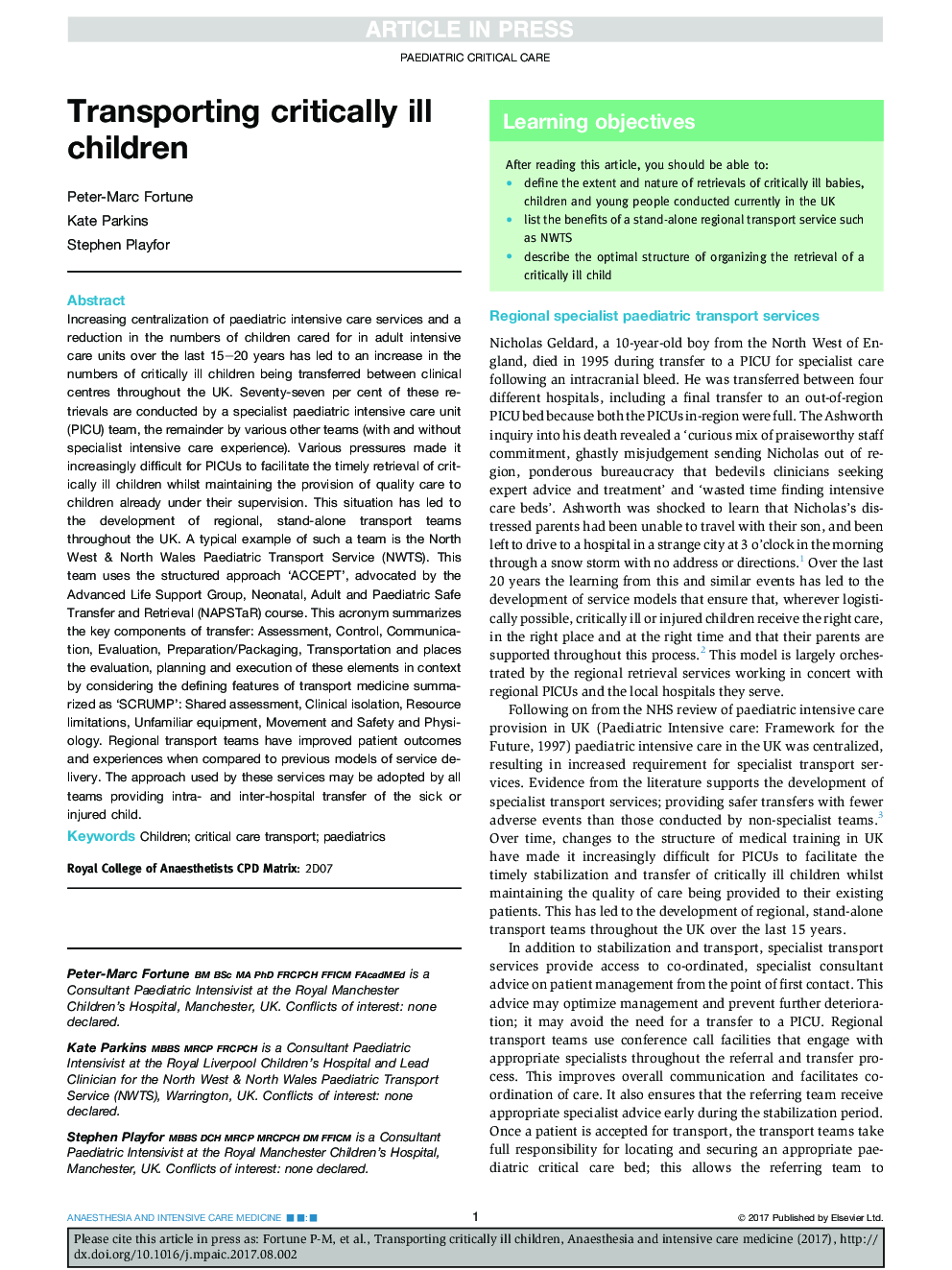| Article ID | Journal | Published Year | Pages | File Type |
|---|---|---|---|---|
| 8610270 | Anaesthesia & Intensive Care Medicine | 2017 | 5 Pages |
Abstract
Increasing centralization of paediatric intensive care services and a reduction in the numbers of children cared for in adult intensive care units over the last 15-20 years has led to an increase in the numbers of critically ill children being transferred between clinical centres throughout the UK. Seventy-seven per cent of these retrievals are conducted by a specialist paediatric intensive care unit (PICU) team, the remainder by various other teams (with and without specialist intensive care experience). Various pressures made it increasingly difficult for PICUs to facilitate the timely retrieval of critically ill children whilst maintaining the provision of quality care to children already under their supervision. This situation has led to the development of regional, stand-alone transport teams throughout the UK. A typical example of such a team is the North West & North Wales Paediatric Transport Service (NWTS). This team uses the structured approach 'ACCEPT', advocated by the Advanced Life Support Group, Neonatal, Adult and Paediatric Safe Transfer and Retrieval (NAPSTaR) course. This acronym summarizes the key components of transfer: Assessment, Control, Communication, Evaluation, Preparation/Packaging, Transportation and places the evaluation, planning and execution of these elements in context by considering the defining features of transport medicine summarized as 'SCRUMP': Shared assessment, Clinical isolation, Resource limitations, Unfamiliar equipment, Movement and Safety and Physiology. Regional transport teams have improved patient outcomes and experiences when compared to previous models of service delivery. The approach used by these services may be adopted by all teams providing intra- and inter-hospital transfer of the sick or injured child.
Related Topics
Health Sciences
Medicine and Dentistry
Anesthesiology and Pain Medicine
Authors
Peter-Marc Fortune, Kate Parkins, Stephen Playfor,
